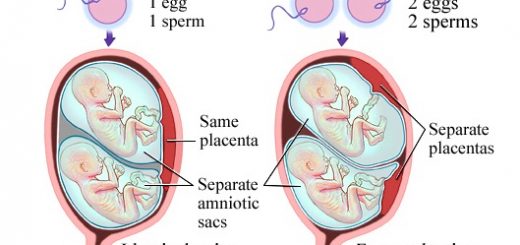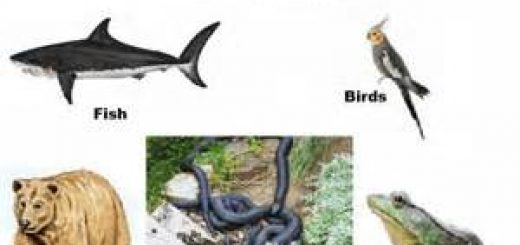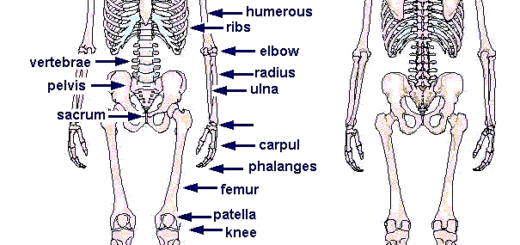Asexual and sexual reproduction in plants, Pollination and Stages of fertilization process in plants
Some plants can reproduce sexually & asexually because some plants reproduce sexually through flowers and reproduce asexually through the different parts of the plant without the flower having a role in this process and the resulting individuals are completely identical to the original plant. Pollination in palm trees is artificial pollination because it takes place by man. Pollination of maize plants is mixed pollination because the flowers of this plant are unisexual flowers.
Steps of sexual reproduction in plants
It takes place in flowering plants through female reproductive organs (gynoecium) and male reproductive organs (androecium). It takes place in two successive processes, which are Pollination, and Fertilization.
Pollination
Pollination is the process of transfer of pollen grains from the anthers of a flower to the stigmas. Pollen grains are small cells formed in the anther inside the pollen chamber. When those grains become mature, the anther splits longitudinally and the pollen grains spread in the air like dust.
Types of pollination
- Self (auto) pollination.
- Mixed (cross) pollination.
Self (auto) pollination
Self-pollination is the transfer of pollen grains from the anthers of a flower to the stigmas of the same flower or to another flower in the same plant.
Reasons of occurrence: Flowers must be bisexual (hermaphrodite) and characterized by one of the following: Anthers and stigmas are maturated at the same time, such as flax plants. Non-blooming flowers until completion of the fertilization process, such as barley plant.
The pollination in the barley plant is self-pollination because its flowers never bloom until the completion of the fertilization process.
Mixed (cross) pollination
It is the transfer of pollen grains from the anthers of a flower to the stigmas of another flower in other plants of the same kind.
Reasons of occurrence: The flower is bisexual and its anthers and stigmas are not maturated at the same time, such as the sunflower plant, The flower is unisexual, such as the maize plant.
Auto pollination can’t happen in sunflower plants because the anthers and the stigmas are not maturated at the same time.
Methods of mixed (cross) pollination
- Pollination by air (wind).
- Pollination by insects.
- Artificial pollination.
Pollination by air (wind)
Some characteristics of flowers in which pollination occurs by air:
- Stigmas are feathery-like and sticky to catch pollen grains from the air.
- Pollen grains are produced in huge numbers to compensate what are lost in air. They are light in weight and dry to be easily carried for long distances by air, Maize plant produces about 50 million pollen grains.
- Anthers are hanged to be easily opened by air.
Pollination by insects
Some characteristics of flowers in which pollination occurs by insects:
- Petal is coloured and scented to attract insects (like bees) to feed on its nectar.
- The pollen grain is sticky or having coarse surfaces to stick (adhere) on the insect body.
Artificial pollination
This method of pollination is carried out by man. Example: The gardener in the pollination process of palm trees spread pollen grains over their female flowers.
Fertilization
After pollen grains transfer to the stigmas of flowers, the pollen grains must be germinated first, then the fertilization process will occur.
Pollen grain germination
- Place a drop of the diluted sugary solution on a glass slide and put some pollen grains, then cover them with a glass cover.
- Repeat the previous step by replacing the diluted sugary solution with water.
- Keep both slides in a dark warm place for half an hour.
- Examine the two slides under the microscope.
You observe that the pollen grains in the sugary solution germinate by the formation of a pollen tube containing 2 male nuclei and one tube nucleus, but those placed in a drop of water don’t germinate, so, Pollen grains germinate when a suitable nutritive medium is available such as a diluted sugary solution. The previous activity explains: What happens to the pollen grains when falling on the stigmas of the flowers to complete.
Stages of fertilization process in plants
- Stage 1: After pollination. the pollen grain sticks on the stigma, which secretes sugary solution.
- Stage 2: The pollen grain germinates forming a pollen tube (containing 2 male nuclei).
- Stage 3: The pollen tube extends through the style till it reaches the ovule inside the ovary through the micropyle.
- Stage 4: The end of the pollen tube degenerates and one of the 2 male nuclei fuses (combines) with the ovum (egg cell) forming a fertilized ovum which is known as a “zygote”.
- Stage 5: The zygote undergoes successive divisions to form the embryo which grows to form a new plant.
Fertilization in plants is the process of fusion of the nucleus of the male cell (pollen grain) with the nucleus of the female cell (ovum) to form the zygote. The zygote is the cell resulting from the fusion of a pollen grain and ovum nuclei.
Formation of seeds and fruits
After completion of the fertilization process, The wall of the ovary develops to become the outer coat of the fruit which is called the “Pericarp”. The ovary develops to become a fruit. The wall of the ovule develops to become the seed coat. The ovule develops to become a seed.
Fruits differ from each other according to the nature of the ovary because the ovary that contains:
- One ovule gives a fruit with a single seed, such as olives, and peaches.
- Many ovules give a fruit with many seeds, such as beans, and peas.
Asexual reproduction in plants
Some plants can reproduce without flowers through parts of the root, stem, leaves or buds and this type of reproduction is called “Vegetative reproduction” and the resulting individuals are completely identical to the original plant. Vegetative reproduction is a process of producing new individuals from different parts of the plant without the flower having a role in this process.
Types of Vegetative Reproduction
- Natural vegetative reproduction.
- Artificial vegetative reproduction.
Natural vegetative reproduction
It takes place by many ways, such as reproduction by Rhizomes, Corms, Tubers, Bulbs, and Offshoots.
Reproduction by tubers
The tuber is a swollen part from a horizontal root or a terrestrial stem, It contains growing buds and it is used for vegetative reproduction, The tuber is a horizontal root as sweet potatoes or a terrestrial stem as potatoes.
Cut a tuber of potato into multiple slices, where each slice should contain a bud or more. Cultivate these parts and water (irrigate) them regularly for a week. Some bad grow forming a root system which grows down, Other buds grow forming a shoot system which grows up, After some days, the old tuber changes into a plant that carries many new tubers.
Artificial vegetative reproduction
It takes place by four ways, which are cutting, Grafting, Tissue culture, and Layering.
Reproduction by cutting
It is a kind of artificial vegetative reproduction in which a part of a plant that contains growing buds known as the cut is planted. The cut is a part of root, stem or leaf that contains growing buds taken from a plant for reproduction. It is common for the cut to be a branch carrying many buds. Examples: Grapes, Roses, and Sugar cane.
Cultivate one cut of a plant in a pot. (this cut must contain more than one bud). Irrigate the cut regularly for two weeks. The buds buried inside the soil grow to form the root system of the plant, The buds above the soil surface grow to form the shoot system of the plant, The shrubs obtained from cuttings are transferred to gardens and fields for planting in the soil to obtain new plant individuals.
Reproduction by grafting
It is a kind of artificial vegetative reproduction in which a part of the plant which contains more than one bud known as scion is selected to be placed on a branch of another plant known as the stock.
Methods of grafting
Grafting by attachment
- The scion and the stock are cut with two integrated angles.
- The scion is attached to the stock.
- The scion and the stock are tightly tied together to make the scion feed on the juice of the stock.
Grafting by a wedge
- The scion is prepared in the form of a wedge (pencil-shaped).
- The scion is inserted into a cleft in the stock.
- The scion and the stock are tightly tied together to make the scion feed on the juice of the stock.
The produced fruits by grafting belong to the type of scion, This kind of reproduction is used only between highly similar plant species such as:
- Oranges and naring (bitter orange)
- Apples and pears
- Peaches and apricots
The reproduction by grafting cannot be used between oranges and peaches because this kind of reproduction is used only between highly similar plant species.
Gluing stem is a disease, which infects bitter orange trees and doesn’t infect naring. That’s why reproduction by grafting is useful when the disease spreads in orange fields. In this case, orange is the scion while bitter orange is the stock.
When you tie a part of the orange plant on a branch of the naring plant. The orange plant (scion) feeds on the juice of the naring plant (stock) and grows forming orange fruits.
Tissue culture
Tissue culture is the process of multiplying a small part of a plant to get many identical parts. Tissue culture is considered from the important modern ways to increase crops because it is a process of multiplying a small part of a plant to get many identical parts.
Steps to grow a tissue from the stem of a potato plant
- The tissue is separated from the upper part of the stem, and it is placed in a nutritive medium containing nutrients and hormones, The new plant starts to grow to a certain size, The new plant is transferred to the soil to grow normally.
On Separating a tissue from the upper part of a potato stem and putting it in a nutritive medium and hormones. The tissue grows forming a new plant of the same kind.
Types of reproduction in plants, Typical flower, Structure and sex of flower
Pollination, Fertilization, Seed and Fruit formation in flowering plants
Reproduction in flowering plants, Structure and functions of the flower



